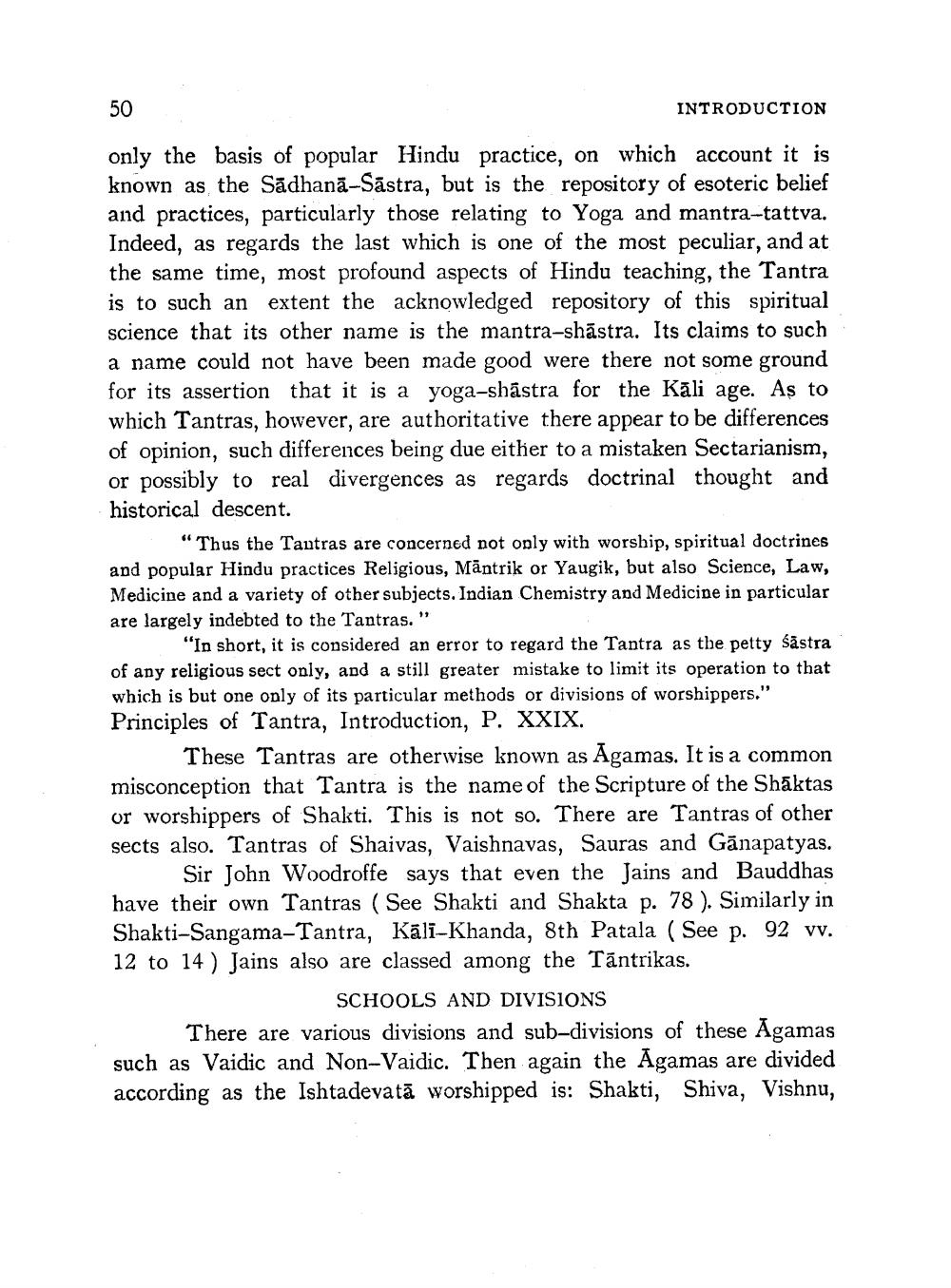________________
50
INTRODUCTION
only the basis of popular Hindu practice, on which account it is known as the Sādhanā-Sāstra, but is the repository of esoteric belief and practices, particularly those relating to Yoga and mantra-tattva. Indeed, as regards the last which is one of the most peculiar, and at the same time, most profound aspects of Hindu teaching, the Tantra is to such an extent the acknowledged repository of this spiritual science that its other name is the mantra-shāstra. Its claims to such a name could not have been made good were there not some ground for its assertion that it is a yoga-shāstra for the Kāli age. As to which Tantras, however, are authoritative there appear to be differences of opinion, such differences being due either to a mistaken Sectarianism, or possibly to real divergences as regards doctrinal thought and historical descent.
"Thus the Tantras are concerned not only with worship, spiritual doctrines and popular Hindu practices Religious, Māntrik or Yaugik, but also Science, Law, Medicine and a variety of other subjects. Indian Chemistry and Medicine in particular are largely indebted to the Tantras."
"In short, it is considered an error to regard the Tantra as the petty sästra of any religious sect only, and a still greater mistake to limit its operation to that which is but one only of its particular methods or divisions of worshippers." Principles of Tantra, Introduction, P. XXIX.
These Tantras are otherwise known as Agamas. It is a common misconception that Tantra is the name of the Scripture of the Shāktas or worshippers of Shakti. This is not so. There are Tantras of other sects also. Tantras of Shaivas, Vaishnavas, Sauras and Gānapatyas.
Sir Tohn Woodroffe says that even the Jains and Bauddhas have their own Tantras (See Shakti and Shakta p. 78 ). Similarly in Shakti-Sangama-Tantra, Kāli-Khanda, 8th Patala (See p. 92 vv. 12 to 14 ) Jains also are classed among the Tántrikas.
SCHOOLS AND DIVISIONS There are various divisions and sub-divisions of these Agamas such as Vaidic and Non-Vaidic. Then again the Agamas are divided according as the Ishtadevatā worshipped is: Shakti, Shiva, Vishnu,




